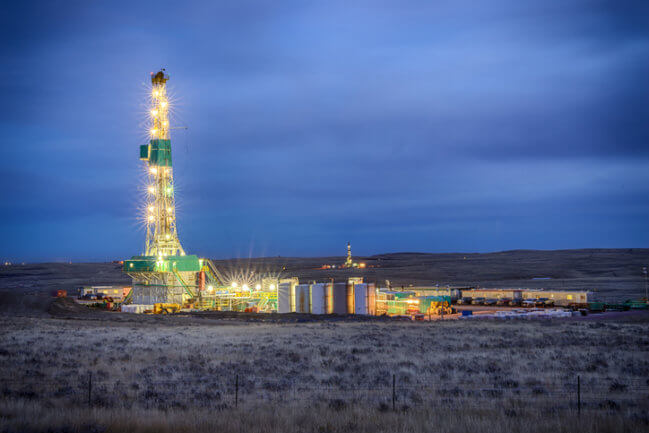Some people say America’s shale revolution (which began in 2006) is now over. However, despite lower oil and gas prices, new advances in technology make energy extraction increasingly cheaper to do. Oil is still the most-traded commodity in the world. Recent refining industry shake-ups from Harvey and Irma uncovered just how quickly American demand for gasoline shifts during a crisis. The upshot? If you’re going to invest in energy extraction, do it now — before American production surpasses OPEC’s biggest members.
From Rice University’s research into shale imaging via nuclear magnetic resonance to drilling technique advancements and data analytics, tech matters. The shale revolution is clearly back on again, and it’s creating solid investment opportunities right here at home.
Tech Advances Help Keep America’s Shale Revolution Going
When it comes to maximizing profits derived from the United States shale revolution, knowledge is literally power. Rice University’s researchers are working to understand how oil and gas molecules, water, and rocks interact at the nanoscale level. Engineers George Hirasaki and Walter Chapman combine nuclear magnetic resonance with molecular dynamics simulations to help define organic shale’s content.
As a result, the team hopes to make extracting hydrocarbons through hydraulic fracturing more efficient. Their method (published in the Journal of Magnetic Resonance) will help predict how much oil or gas a formation contains. In addition, producers can use it to learn how difficult extracting oil or gas from the rock’s pores may be.
Shale Revolution May Help Break Oil Production Records in 2018
According to the Energy Information Administration, U.S. oil production in 2017 is projected to reach 9.3 million barrels per day. The EIA predicts that daily production could reach 9.8 million barrels in 2018 — the highest annual average in U.S. history. For comparison’s sake, Saudi Arabia averaged 10 million barrels per day in August 2017.
There are many new production techniques born out of America’s shale revolution helping drive these record-breaking numbers. This includes the latest technique for keeping hydraulic fracturing events close to the wellbore, rather than employing more wide-ranging fracks. Fracks formerly reached out 100 feet or so from the wellbore and generated about 5% oil recovery in place. Now, fracks reach out only around 25 feet, improving oil recovery levels up to 25% and rising. Other recent fracking industry improvements include:
- Advances in directional drilling
- Geo-steering
- Better drill bits
- More sophisticated down-hole communication
As a result of these technological advances, fewer rigs and smaller crews are enjoying better-optimized production growth.
How Big Data Helps Optimize Fracking Output
The technological advances we’ve already discussed are important to the U.S. shale revolution — yet they’re only part of the puzzle. The other missing piece? Big data.
According to the MIT Technology Review, the shale revolution’s oil boom that started over a decade ago is not ending. Instead, it’s just going to get more efficient, thanks to new technological advances. One great example is the new sensing capabilities deployed as part of the fracking industry’s “smart” drilling rigs. Producers can use the data collected directly from each drilling operation to:
- Optimize drill bit location
- Enhance subterranean mapping
- Improve overall production and transportation efficiencies
- Predict where the next promising formation lies
Startups are taking the lead in offering valuable insights to oil producers, and that’s just the beginning. These new tech companies use algorithms to collect news, reports, shipping and customs data as well as tracking tanker routes. Another potential leverage point may involve drill site-specific data gathered by the oil producers themselves.
Crude oil prices are determined by a mixture of supply, demand, and futures contracts. Cyclical trends in the commodities market may also play a role. American oil and gas production’s also changing — and thriving — thanks to new production technology and advancements that include data analytics. In the foreseeable future, America’s shale revolution shows no signs of slowing down or stopping altogether.



